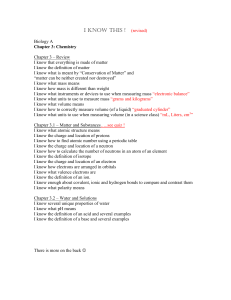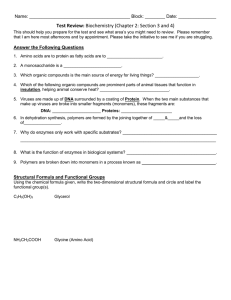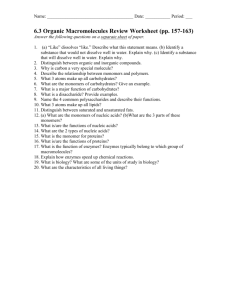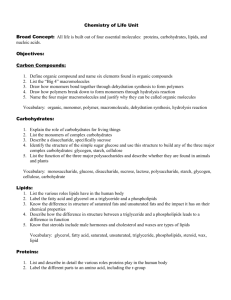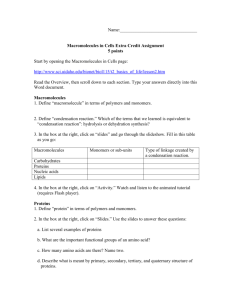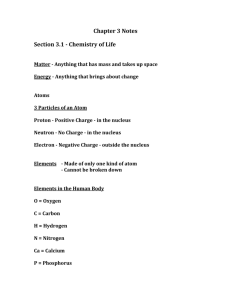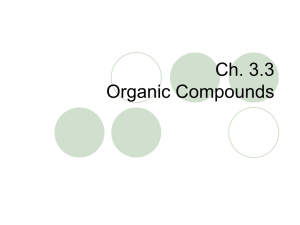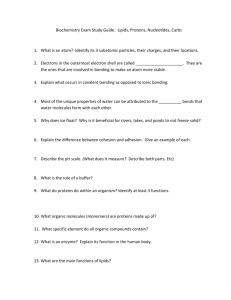Document
advertisement
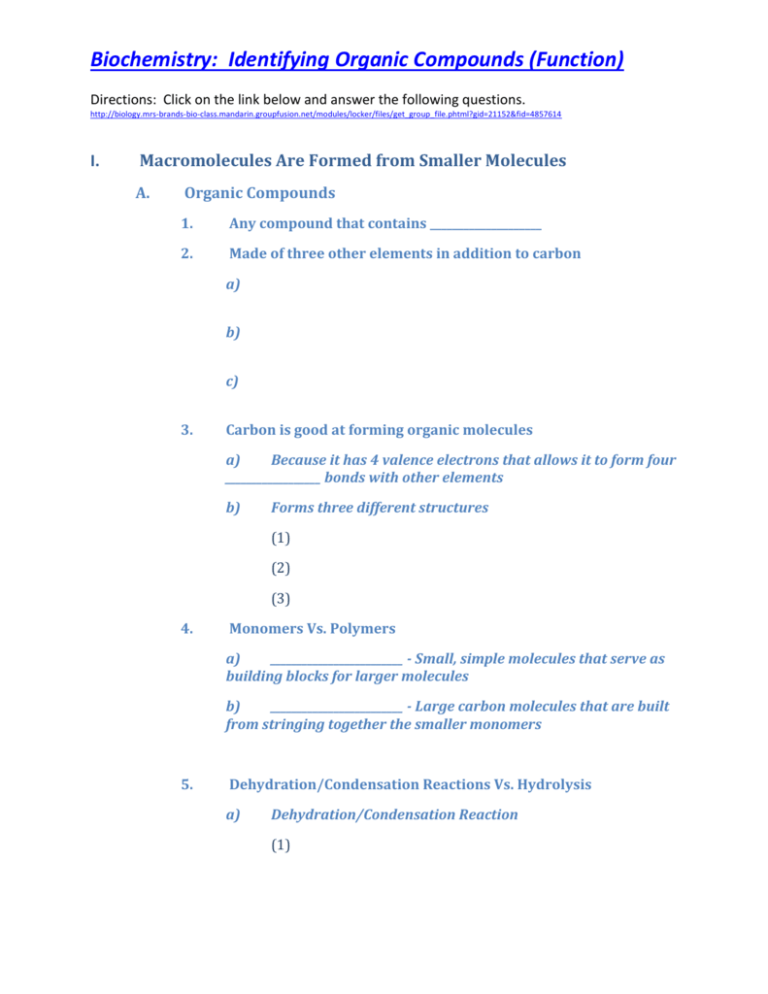
Biochemistry: Identifying Organic Compounds (Function) Directions: Click on the link below and answer the following questions. http://biology.mrs-brands-bio-class.mandarin.groupfusion.net/modules/locker/files/get_group_file.phtml?gid=21152&fid=4857614 I. Macromolecules Are Formed from Smaller Molecules A. Organic Compounds 1. Any compound that contains ____________________ 2. Made of three other elements in addition to carbon a) b) c) 3. Carbon is good at forming organic molecules a) Because it has 4 valence electrons that allows it to form four __________________ bonds with other elements b) Forms three different structures (1) (2) (3) 4. Monomers Vs. Polymers a) _________________________ - Small, simple molecules that serve as building blocks for larger molecules b) _________________________ - Large carbon molecules that are built from stringing together the smaller monomers 5. Dehydration/Condensation Reactions Vs. Hydrolysis a) Dehydration/Condensation Reaction (1) Biochemistry: Identifying Organic Compounds (Function) b) (2) Removes a molecule of _________________ (3) Dehydration/Condensation Hydrolysis (Hydro = , Lysis = (1) 6. (2) Inserts a molecule of ___________________ (3) Hydrolysis Energy Storage a) The purpose of macromolecules is to store ______________ in the _________________between monomers. b) Cellular energy: ) Biochemistry: Identifying Organic Compounds (Function) II. Classes of Macromolecules A. Carbohydrates 1. Carbohydrates are: 2. 3 forms of carbohydrates a) Monosaccharides: ex: b) Disaccharides: ex: c) Polysaccharides: ex: 3. The monomers of carbohydrates are:____________________________ 4. Isomers: ex: B. Proteins 1. Proteins are: 2. Come from what food sources: 3. The monomers of proteins are:_________________________________________ a) There are ______________ different amino acids Biochemistry: Identifying Organic Compounds (Function) 4. 5 functions of proteins a) b) c) d) e) 5. C. Peptide Bonds: a) Long chains of amino acids:_________________________________ b) One or more polypeptides: __________________________________ Lipids 1. Lipids are: 2. In comparison to other macromolecules, lipids store _____________ energy per gram. 3. The monomers of Lipids: _________________________________________ 4. Types of Lipids a) Triglycerides: (1) Function: Biochemistry: Identifying Organic Compounds (Function) b) Phospholipids: (1) c) Waxes: (1) d) Function: Function: Steroids: Examples: (1) D. Function: Nucleic Acids 1. Nucleic acids are: 2. The monomers of nucleic acids are:____________________________________ 3. Types of Nucleic Acids a) DNA: (1) b) Function: RNA: (1) Function:
